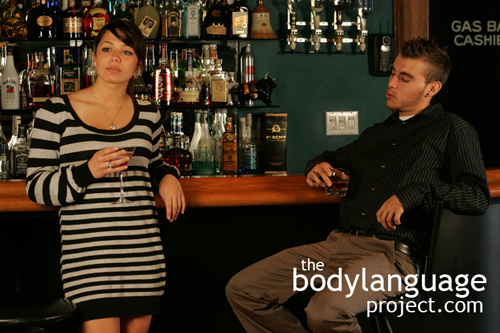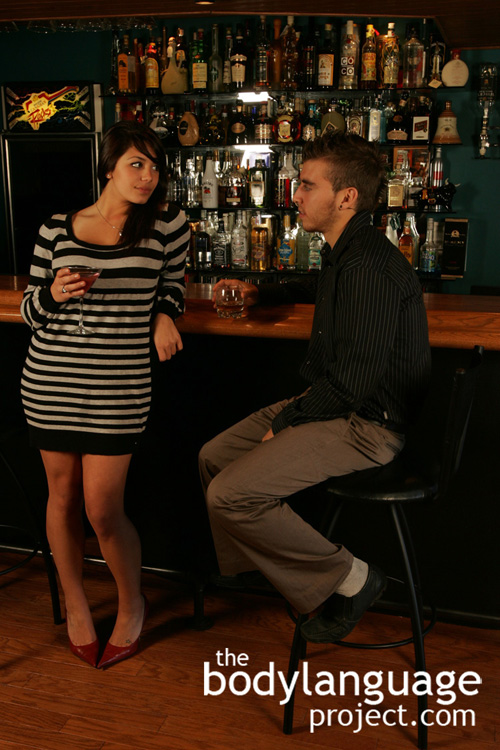There are four main ways in which a person might stand [a] Straight up with their feet together [b] feet slightly apart, but parallel [c] one foot forward and [d] legs crossed at the ankle.
The first posture with the legs straight and feet together is an attentive pose seen in obedient children when speaking to their parents. It is a neutral, honest pose and is found in adults of differing status like a boss and his employees. The second pose, as we saw earlier, where the legs are spread at shoulder width while standing, is a form of crotch display. This posture says “I’m going nowhere, and fast.” The standing crotch display can be made even more powerful by adding the thumbs in a belt loop, called the “cowboy pose.” The cowboy pose was made famous by old Western movies. The third posture where one foot is moved forward, with respect to the other, indicates subtle interest toward the direction in which the foot is advanced. To show interest, the foot will be moved toward the speaker, but it can also be moved away from the speaker toward someone we would rather have speak, or to the door when we wish to end the conversation. The foot takes the “first step” toward where the mind wishes it where.
The final pose where the legs are crossed at the ankle is a submissive posture. It reveals that the target isn’t ready to commit to a proposal, and shows reservation to the situation, but also that he isn’t ready to leave. The ankle cross is figurative denial of access to the body and mind. Our minds and bodies are linked so when we uncross our bodies we show others that we are willing to hear them out, which is an excellent indication that, our opinions either already match, or that there is at least a willingness to consider the facts.
An open posture while standing shows supreme confidence because it exposes the midsection to attack. When people meet for the first time, they will show timidity by crossing at the ankle. In fact, this is the most common way in which people will stand when meeting new people, those exempt will both, carry a higher status, and be aware of it.
Arm crossing, or tucking the hands in pockets, are two other ways to raise barriers when uncomfortable. These posture don’t mean negativity per se, they are simply indications that someone needs more time to acclimatize themselves to new people. Introverts over extroverts, will be found to hold this posture for much longer and more frequently than extroverts. In fact, extroverts might warm up to people so fast that they never show timidity at all, they usually jump right into any group and feel at home. When dealing with an introvert, on the other hand, offer to take them to a quiet and less busy environment to make them more comfortable. Offering a drink too, can give their hands something to do to breaking their rigidity. Providing an environment where your ideas might stick, first begins by removing barriers, even if they are nonverbal.
__________________________________________________________________________________________

Feet together – attentive.

Normal standing posture with feet at shoulder width apart – shows calm confidence.

One foot pointed away – shows disinterest.
__________________________________________________________________________________________

How does the ‘cowboy posture’ appear fully nude?

Legs crossed at the ankles says I’m not happy – but I’m not going anywhere.
__________________________________________________________________________________________












